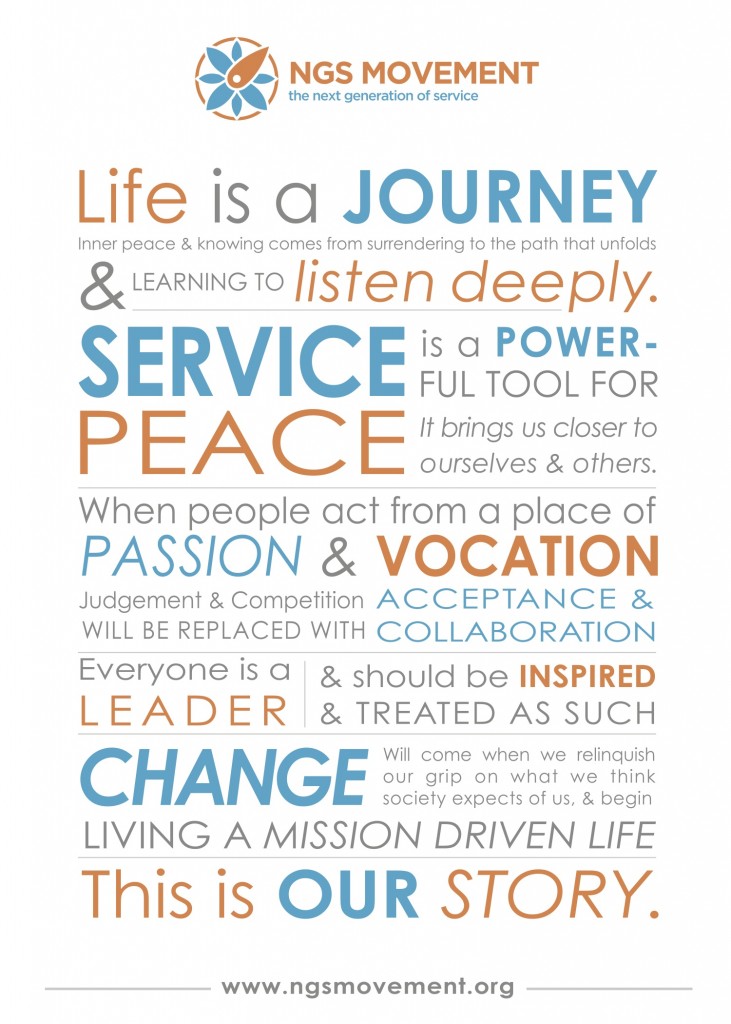
10 Tips for Living on a Stipend
When people hear the words “service year”, the first thing they think is often:
“Work for almost nothing- for a year”.
And this is a justified reaction when there are many costs to consider in just going about your daily life.
As an AmeriCorps VISTA member, I struggled with making the living stipend work for my costs of living expenses. I got through it, just as thousands of others members have (not to mention the hundreds of thousands of Americans who live below the poverty line -not by choice). In writing this blog post, I asked for tips from my roommate (critical to helping me saving money) from that time, Whitney, a fellow AmeriCorps VISTA. Below are a few of Whitney’s suggestions with my anecdotes.
1.Budget (Plan ahead!)
This might seem tedious and boring, but it’s your starting point to draft a plan for your service year. Your parents were right about budgeting. A budget gives you a sense of your fixed expenses and the expenses where you have some wiggle room. Check into the specifics of your program and whether housing, transportation are covered by the organization.
2.Keep Rent Low
Housing is often the largest fixed expense you will face, often between 25 to 50% of your budget. If your program does not offer housing and you cannot live at home or with a family friend, consider roommates. The best place to start on a roommate search is by looking for other long-term volunteers, either in your program or a different program in the same city. It is always easier to forget you are living on a limited income when you are surrounded by other people in a similar economic situation (See here). Plus, living with a roommate who is participating in service means they are more likely to share your values and provide further social support.
3.Transportation
Cars are expensive. They require maintenance and insurance, and yet they spend most of the time just parked somewhere. If you can live without a car, do so. Whitney and I shared a bedroom (college dorm style) so that we could afford an apartment located 2 blocks from the non-profit where we served. Before deciding where to live, look into other options like mass transit (a great way to live like the people you serve) and Car2go (or another ride sharing program). Going the car sharing or public transportation route is environmentally conscious to boot.
4. Food & Drink
Buy food in bulk. Chances are someone in your community will have a Costco card (ask around) or other access to discounted grocery stores. Work with friends, co-workers or roommates to buy products everyone needs and split the costs. For fresh food, consider volunteering to work at a local farmers market (volunteers often get free produce that goes unsold). Only eat out for special occasions and don’t order drinks. If you want to indulge in libations, consider “2-Buck-Chuck” from Trader Joes (~$2.99 now but still does the trick).
5. Buy Only What You Need
One of the best practices you can pick up is to only buy what you need. Whenever you see a nice pair of shoes or top you want, ask, “Do I really need this? What old items am I willing to donate to make room for this?” Chances are if you are not willing to get rid of something currently in your closet, you don’t really need the item. Learning to ask these questions is a skill for life in balancing needs and wants.
6. Thrift Stores
When you first move in to your new place, avoid stores like Target with a plethora of low-to-moderately priced items. I don’t mean to call out a specific company, but we all know that when we walk in there, we walk out with way too much stuff. Instead, when you are looking for furniture and pots and pans, go to a thrift store. People are always donating these things and sometimes you can negotiate the price. Tip: research the more effluent neighborhoods and look for the thrift stores there – you may land yourself some Pottery Barn items.
If you are volunteering abroad, find the expatriate community. You may find a recent expat will be preparing to head home and will donate household items to you.
7. Home Exercise
We know how important exercising is and, luckily, it does not need to cost money. In the first week of my service year I swam in an open water race and ended up winning a year-long gym membership! If competition events are not your thing, you can always use park recreation equipment or pick up jogging; that is what Whitney did and she ran her first marathon during her service year. You can also use workout videos, search on iTunes and YouTube for free, DIY routines. I used to wake up every morning to Whitney in our living room wearing a Jazzersize tank top punching the air. Priceless!
8. Look for Free Entertainment
Find your neighborhood’s local newspaper (e.g. San Diego’s City Beat) and look for music, festivals and other cultural events in local parks and recreation centers. Many of these events are free and open to the public. Go hiking or swimming at the beach, river or lake. Some museums even provide free admission several days throughout the month.
9. It is All Relative
The most useful tip to living on a stipend is remembering that wealth is all relative and to give thanks for what you have, even if it does not feel like much. Savor the moments you feel wealthy. My service year roommates and I would drink water out of wine glasses to feel classy.
10. Sign Up for Our Living On A Stipend Workshop
Every semester we offer a workshop that explores your fears and beliefs around living on a stipend during your service year. NGS offers advice on how to make the most of your service year.
Follow us on Facebook and Twitter to read our future blog post on the benefits to living on a stipend.
Also, if you are a service program alum, share your tips in the comments below!
Written by Anna Lenhart
Edited by Nicole Campbell





